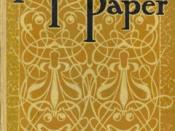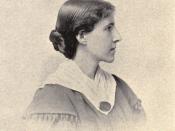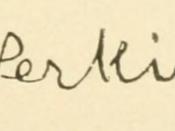In 1877, Silas Weir Mitchell became famous for his treatment of nervous disorders. His treatment was called the Rest Cure. His treatment was extensive and strict, and what we would think of today as being ridiculous. His treatment included that the patient has to stay in bed for six weeks to two months, were in some cases not allowed to turn themselves over without aid, were not allowed to read or write. He informed his patients to become as domestic as possible. One of the main ideas of his treatment was the doctor- patient relationship, where the male was the doctor and the female was the patient. One of Mitchell's patients was Charlotte Perkins Gilman. He instructed her to, "never touch pen, brush or pencil as long as you live" (Golden 2). The bad thing was that the Rest Cure just made Gilman even more ill and insane. So in order to express to everyone the misery she went threw, Gilman wrote "The Yellow Wallpaper" as a way to show everyone the negative effects of Mitchell's Rest Cure.
Gilman uses her setting, characters, and the tone in the story as a way to convey how bad the Rest Cure actually was and the female confinement she experienced and her trying to escape.
The main setting of the story is the room in which the narrator is placed in. The room she stays in can be represented by one that could also be viewed as an asylum, "For
Gallagher 2
the windows are barred for little children" (Gilman 451). When Gilman was being treated, she spent a month in Mitchell's sanitarium, so she actually experienced what is what like to be confined. Another aspect of the Rest Cure is to be isolated from family and friends during treatment. The narrator...


